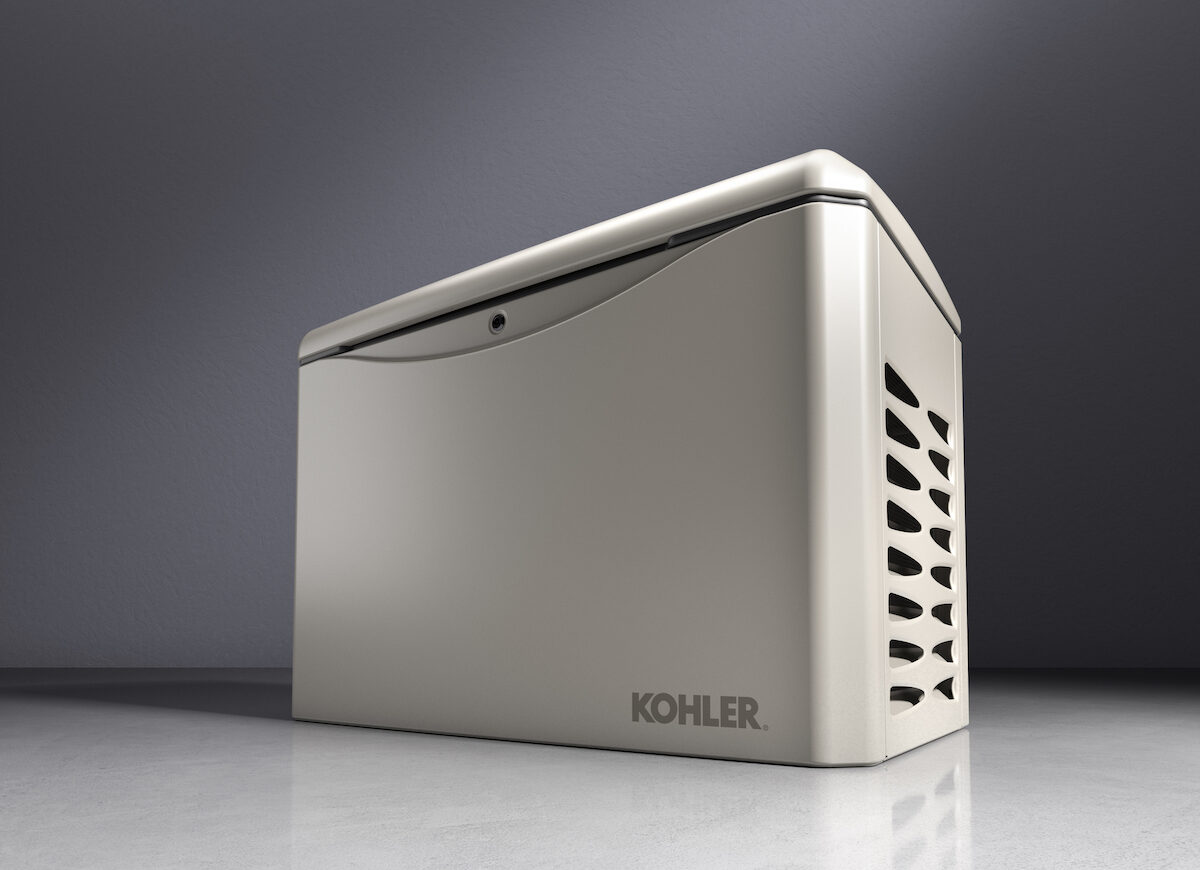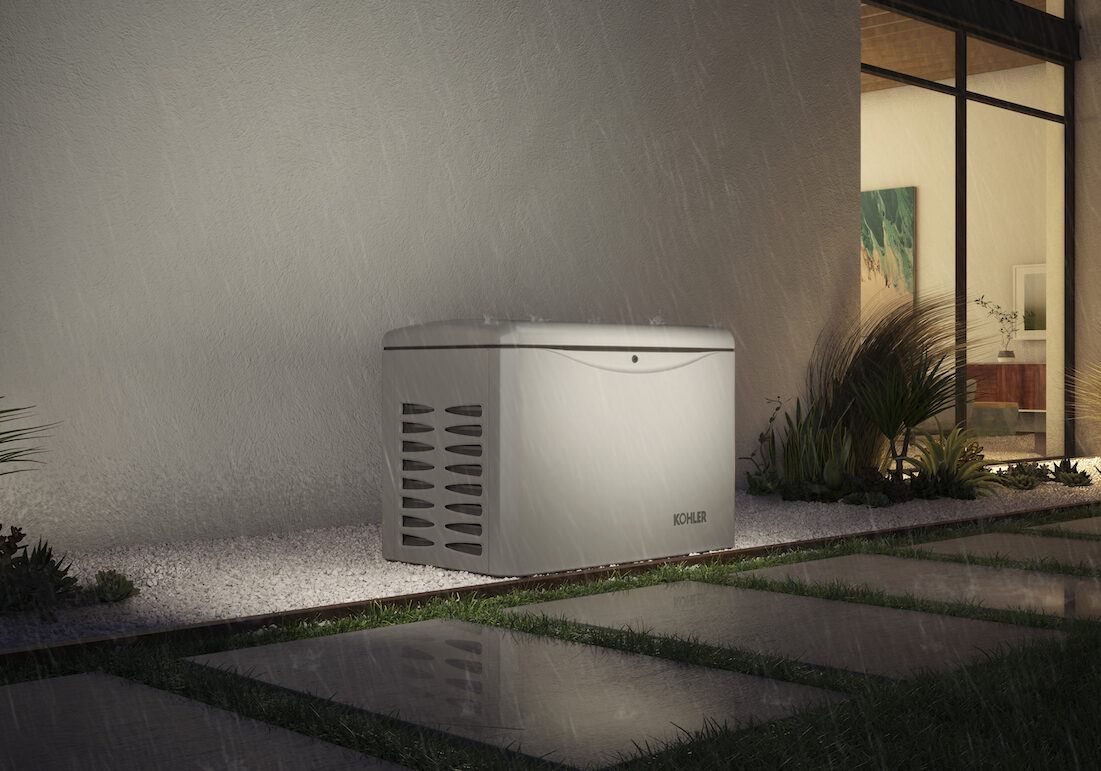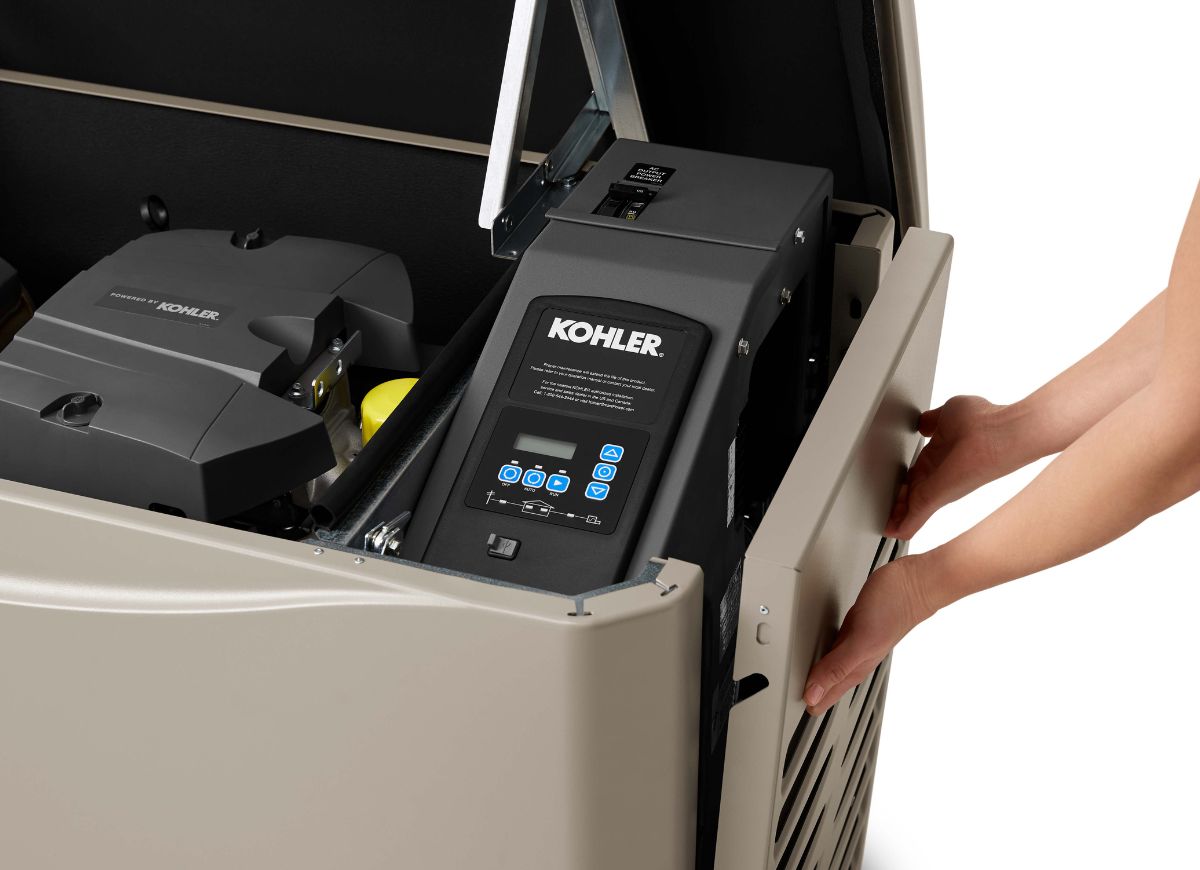We may earn revenue from the products available on this page and participate in affiliate programs. Learn More ›
This content has been brought to you by Kohler. Its facts and opinions are those of BobVila.com.
Investing in a generator is a great way to gain peace of mind in a neighborhood at risk of power outages. There are several types of generators available: Inverter generators can be beneficial for camping or road trips, portable generators are typically used to power corded tools or a small selection of devices, and a standby generator is the best option for your home if you want a reliable generator in a power outage.
However, without proper research, it can be difficult to select an ideal generator for home use. Take some time to learn more about the various factors that apply to residential generators, including power output, durability, noise, and reliability. Use this guide to learn how to choose a generator for your home.

Kohler’s new 26 kW generators are powerful and exceptionally durable—precisely what you need to keep your home running during a power outage. Learn More About Kohler Generators
Power
A primary factor to consider when shopping for a generator is the power of the unit as well as the power needs of the home. Think about how frequently the power goes out and the wattage required to operate various systems, appliances, and other devices to answer the question: What size generator do I need? Also, it’s recommended to research the fuel type, runtime, and transfer switch ratings to help determine the correct whole-house generator sizing.
Frequency of Outages
It’s necessary to consider the frequency and average length of the power outages in your neighborhood. If your home experiences prolonged blackouts often—or, if you have a number of essential appliances you rely on, which we touch on next—a standby generator can be a wise investment to help supplement the home electrical system. The new KOHLER 26 kW Home Generator, for instance, can provide ongoing power to the home over several days or even weeks.
Wattage Needs
To understand the wattage needs of the home and how to choose a generator that can accommodate those needs, it’s beneficial to have a basic grasp of starting wattage and running wattage. While the following figures and formulas can help you get started, it’s important to work with a dealer to nail down precise generator sizing for your home.
- Starting wattage is essentially the amount of electricity that is required to start an electrical device. This is typically about three times the running wattage.
- Running wattage is the basic amount of power needed to keep the device running.
The wattage needs of the home depend on the quantity and type of electrical devices that you want to run. For example, if you want to keep a window air conditioner, refrigerator, and microwave running during a power outage, the wattage requirements would be about 2,400 to 3,500, depending on the specific makes and models. Below is a list of common household appliances, systems, and other devices with their approximate running wattage:
- Refrigerator/freezer: 600 to 800
- Electric range (one element): 2,500
- Toaster: 1,100 to 1,700
- Microwave: 1,200
- Electric oven: 5,000
- Television: 100 to 350
- Personal computer: 500 to 2,000
- Space heater: 1,250
- Table lamp: 150
- Electric furnace: 5,000 to 25,000
- Central air conditioning: 2,000 to 4,000
- Water heater: 3,000 to 4,500
- Window air conditioner: 600 to 1,500
Add up the total wattage of each item to find the total wattage needed for the home. To approximate the total wattage for each item, use this formula: Running wattage (R) + Starting wattage (R x 3) = Total wattage.
For instance, if you purchase a generator to operate your central air conditioning during summer power outages, the running wattage is approximately 3,000. You can find the starting wattage by multiplying this number by three, which equals 9,000. When you add the two together, you can find the total watts needed to operate the AC system, which equals 12,000 watts.
If you’re not up for math equations, using an online generator size calculator is a great way to estimate your home’s power needs.
Fuel and Runtime
Portable generators and inverter generators typically run on gasoline, though you can also find models that operate with propane. Both types will generally only run for about 6 to 16 hours, or until it’s time to refuel.
Whole-house standby generators rely on integrated home fuel sources, such as natural gas or liquid propane, so that you never have to worry about running out of fuel. This ensures that the generator can operate for an extended period of time for hassle-free peace of mind during the entire length of an outage.
Automatic Transfer Switch
An automatic transfer switch is a device that is used to switch the home’s electrical panel from the connection to the grid to the generator. Standby generators have an automatic transfer switch, which activates when the unit detects a loss of public utility power to the home. Portable generators need to be operated by the user. Automatic transfer switches are available in several different amperages.

Durability
Outages can happen in all kinds of weather. While portable generators aren’t usually able to run in the most inclement weather, home standby generators can withstand rain, sleet, ice, snow, UV radiation, and high winds without failing. These systems are designed to back up the home in the event of an emergency, so it’s important to invest in a model with built-in sensors and systems that can withstand severe weather, rigorous load conditions, and regular wear and tear.
The KOHLER 26 kW Home Generator endures wear and tear thanks to a heavy-duty commercial crankshaft, crankcase, and hydraulic valve lifters. This model also includes a commercial-grade engine equipped with oil level and oil pressure sensors to protect the engine in case the generator needs to be left unattended during a long power outage. For additional peace of mind, users can monitor energy use, contact their dealer, and much more with OnCue Plus, the free app available for both Apple and Android devices.
The KOHLER 26 kW Home Generator has undergone accelerated testing under rigorous load conditions to meet a 20-year life expectancy. This product also comes with a limited warranty that includes coverage for parts, labor, and travel for 5 full years or 2,000 operating hours after purchase, so homeowners can rest easy knowing Kohler backs up its products.
Noise
A home generator will typically produce about 60 to 80 decibels (dB) of noise during operation. While 60 dB is about the sound level of a normal conversation, 80 dB is louder than a washing machine or a dishwasher; the neighbors or other people living in your home may complain about a generator with noise levels in this range. Worse, you might be in violation of homeowners association (HOA) or local noise restrictions. Kohler’s latest home generator helps solve this issue. It operates with a range of just 56 to 67 dB, offering a more gracious experience to the homeowner, the home’s other occupants, and any nearby neighbors.

Reliability
If you take away anything from this guide to how to choose a generator, remember that a reliable product will always provide better peace of mind than an unreliable product. For example, a standby generator turns on automatically and runs on natural gas or liquid propane, so homeowners can count on it—and the extended power it provides—in an emergency.
To ensure the safety of the residents, a generator should be installed a safe distance from the home (18 inches for the KOHLER 26 kW Home Generator) with the exhaust directed away from any windows, doors, AC units, or other structures.
Also, home generators should be relatively easy to use, intuitive, and accessible; no one wants to be stuck reading a product manual by candlelight when the power goes out. The KOHLER 26 kW Home Generator has an RDC2 controller that manages both the generator set and the Model RXT transfer switch functions, so the generator automatically restores power in just 10 seconds. This quick activation extends to larger appliances and home systems, such as heat pumps and air conditioners, to help keep your family safe during an emergency.

